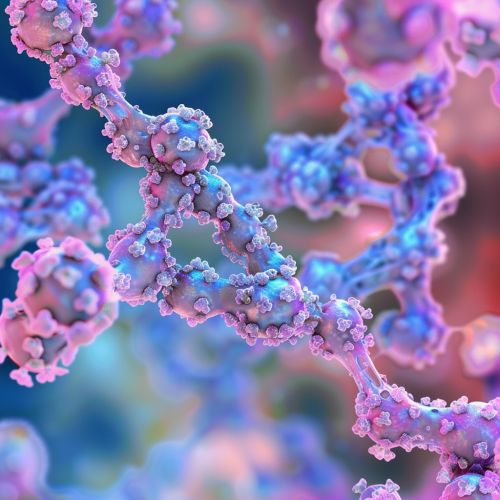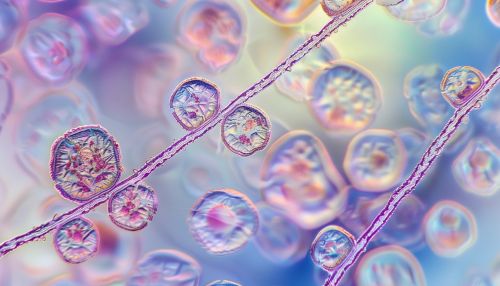Proteoglycans
Introduction
Proteoglycans are a class of glycoproteins that are heavily glycosylated. These complex molecules are composed of a core protein and one or more covalently attached glycosaminoglycan (GAG) chains. Proteoglycans are found in all connective tissues, extracellular matrix (ECM) and on the surfaces of many cell types.


Structure
The structure of proteoglycans is complex and varies widely. The core protein is typically a long, linear molecule with a high proportion of serine and threonine residues. These amino acids provide the attachment sites for the GAG chains. The GAG chains are long, unbranched polysaccharides that are highly negatively charged due to the presence of sulfate and carboxyl groups. The most common types of GAGs found in proteoglycans are chondroitin sulfate, dermatan sulfate, heparan sulfate, heparin, and keratan sulfate.
Function
Proteoglycans play a crucial role in the organization of the ECM and contribute to the mechanical properties of tissues. They also interact with other ECM components such as collagen and elastin, and with cell surface receptors, influencing cell behavior. Proteoglycans are involved in numerous biological processes, including cell proliferation, migration, and differentiation, and they play a key role in tissue development and homeostasis. They are also implicated in several pathological conditions, including cancer, inflammation, and fibrosis.
Classification
Proteoglycans can be classified based on their location (intracellular, cell surface, and extracellular), the type of GAG chains they carry, and their core protein structure. The major classes of proteoglycans include aggrecan, versican, decorin, biglycan, perlecan, syndecan, and glypican.
Biosynthesis
The biosynthesis of proteoglycans involves several steps. The core protein is first synthesized in the ribosome and translocated into the endoplasmic reticulum, where it undergoes post-translational modifications. The GAG chains are then added to the core protein in the Golgi apparatus. The completed proteoglycan is then transported to its final location.
Clinical Significance
Alterations in proteoglycan structure or function can lead to a variety of diseases. For example, mutations in the genes encoding for proteoglycans or the enzymes involved in their biosynthesis can result in a group of genetic disorders known as mucopolysaccharidoses. These disorders are characterized by the accumulation of partially degraded GAGs in cells and tissues, leading to a variety of clinical symptoms. Proteoglycans are also involved in the pathogenesis of several types of cancer, where they can influence tumor growth, invasion, and metastasis.
